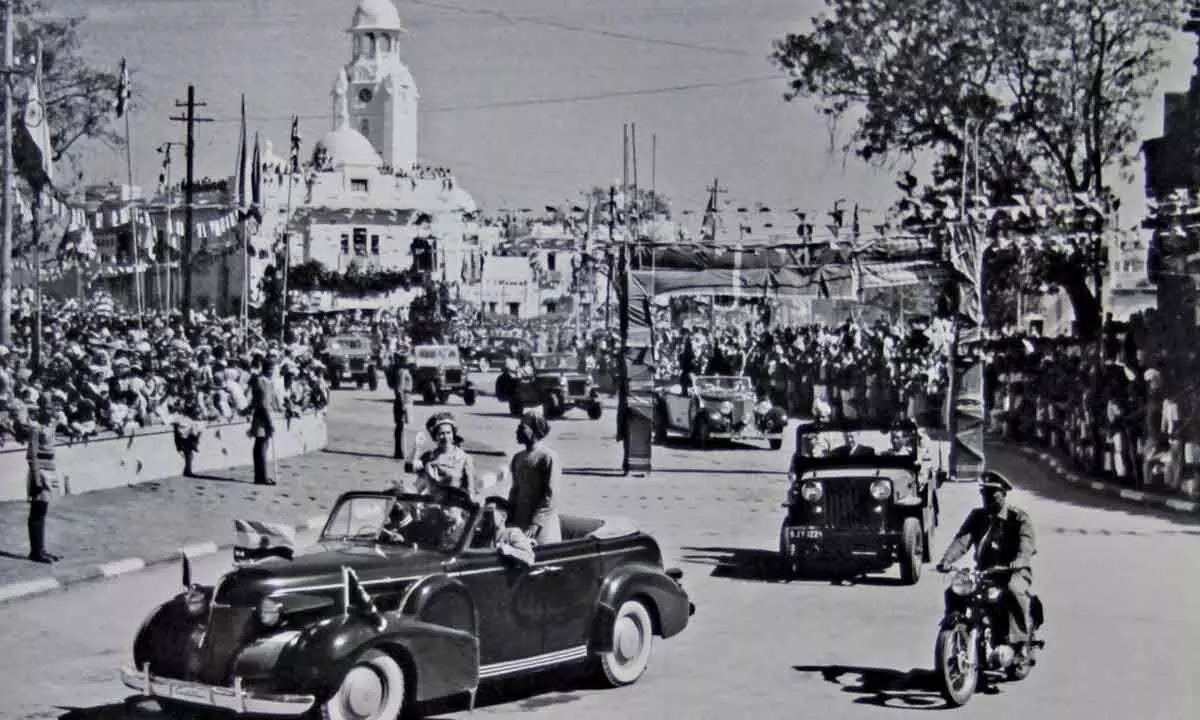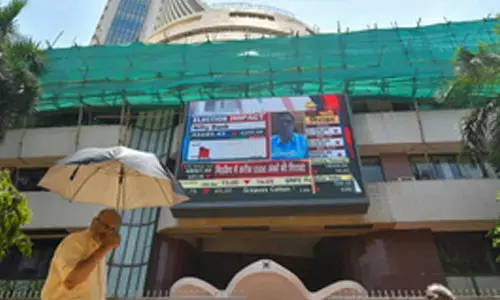A Tale of Two Palaces - A photographic dialogue

Vignettes of Udaipur’s History on Display at the famous Château De Chambord
'A Tale of Two Palaces' is a landmark exhibition that features 150 previously unpublished photos drawn from the individual repositories of Domaine National de Chambord and The City Palace Museum (Maharana Mewar Research Institute), Udaipur. The photographs will be on display at the popular French Château de Chambord till March 5, 2023
It was the best of times, it was the worst of times, it was the age of wisdom, it was the age of foolishness, it was the epoch of belief, it was the epoch of incredulity, it was the season of Light, it was the season of Darkness, it was the spring of hope, it was the winter of despair, we had everything before us, we had nothing before us, we were all going direct to Heaven, we were all going direct the other way—in short, the period was so far like the present period, that some of its noisiest authorities insisted on its being received, for good or for evil, in the superlative degree of comparison only
– From 'A Tale of Two Cities' by Charles Dickens
Each time we look back into the past we do so to gain a perspective of the present times, acquire knowledge and draw comparisons. And when we do so, we realise, it is, but a few visionaries, who have had the forethought and invested in preservation of heritage for the benefit of future generations. Maharana Mewar Research Institute, an integral part of MMCF (Maharana of Mewar Charitable Foundation), to provide an example, is one such repository of invaluable records relating to Mewar and Udaipur over the last 300 years.
"We may not realise it today but each generation of Maharanas was conscious of the need to pre - serve and conserve the heritage they had received in trust. The preservation and conservation were done in the best possible manner. Court and administrative records were also meticulously maintained and were preserved for posterity," shares Lakshyaraj Singh Mewar, Trustee, MMCF and the royal descendent of the rich legacy.
"I feel humbled by the foresight and endeavours of my illustrious ancestors, who patronage education, art, craft, culture, which are sustained in the present era. But they demonstrated their innate wisdom, sensitivity towards history and gave priority to preservation and archiving of records in The City Palace," he adds.
This he said in the context of the landmark international exhibition Vie(s( De Château (x) – A Tale of Two Palaces featuring 'Palace Life - Chambord / Udaipur' at Château de Chambord. A team of professionals at Domaine National de Chambord and MMCF organised the important photographic dialogue between Udaipur and Chambord that was launched in October 2022 and will go on till March 2023.
Rare and unpublished photographs from The City Palace Museum, Udaipur are curated along with the ones from Château de Chambord in an interesting manner to showcase the similarities and contrasts between the two 16th century monuments in terms of not just architecture, but also history, politics, people, environment...
The photographs drawn from the individual repositories give a peek into the lifestyles of the royalty, the people (royal subjects) and the times, the royal guests, the continuing conservation efforts over the years, the rich flora and fauna, the architecture, nature, the festivals, the adaptation of technology and modes of transport, the textile traditions and the crafts.
Chambord & Udaipur – The Walls Stand to Tell Stories
One is a Renaissance-style castle commissioned by Francis I of France originally as hunting lodge during warm months. In 1930, it was opened to the public after it was taken over by the French government and restored.
The other is in the Indian subcontinent – in Udaipur, the city of lakes and the erstwhile seat of power in Rajasthan.
The City Palace, till India's Independence in 1947 was the seat of Mewar's government. It was the hub of administration. It was also a focal point for social and cultural activities which involved all communities and people of Udaipur and Mewar. At the time of India's Independence in 1947 the State of Mewar became the first Princely State to voluntarily integrate Mewar with the Union of Indian.
It was Maharana Bhagwat Singh of Mewar (r.1955 – 1984 CE) who bequeathed the Mardana Mahal and Zenana Mahal of City Palace to Maharana of Mewar Charitable Trust. It was formally declared as a museum in 1969, and has been attracting visitors from across the globe with its vast repository of art, artifacts, rare textiles, paintings, archival photographs, armoury. The Trust continues to put in resources into conservation and restoration - and most importantly initiate various activities to preserve and promote cultural heritage. The Château de Chambord is one of the most visited monuments in France, with over 795,000 visitors in 2019. With its restored gardens, vineyards, horse stables that take you back in time and most importantly the amazing architecture which sets the castle apart. With the help of strategic alliances and by virtue of having the right space and infrastructure – Chambord is serving as a repository to a few permanent collections of art, textiles and furniture etc., The castle has also been holding temporary exhibitions and events to promote art, music and culture.
A Tale of Two Palaces at Chambord – What to expect?
The exploration begins with a return to the origins consisting in the initial photographs of Chambord, taken in the 1840s by the primitive masters William Fox Talbot (with the first known photo of the château), Gustave Le Gray and Albert Stapfer. These pictures highlight the touristic and patrimonial interest of the Château at the time of its inclusion in the first list of the historic monuments of France. The exhibition then offers a cross-cultural perspective of Château de Chambord and the City Palace of Udaipur through 140 photographs divided into four theme-based sections: History, Memories; Architectures; Snapshots of life and Past hunting. The images reveal surprising analogies between two royal residences constructed starting in the 16th century over a 40-year interval: installations and architectural innovations, cultural radiance, close relationships with a natural park and a commune (the town of Udaipur, the region of Mewar in Rajasthan; and the village of Chambord, in Sologne).
As mentioned in the official exhibition catalogue) the two institutions share several characteristics that make up their identity and justify a closer look. They are first of all two royal residences, designed for a potentate who left his mark on them and whose majesty is reflected in the architecture.
However, both are monuments that cannot be reduced to their architecture alone, as they are also intricately linked to a terrain in which hunting was established and practiced according to the conventions of the day. And, far from being isolated from the life of the territory they "administered", they are both connected to a city (or a village) that has enjoyed a special and continuous relationship with them over time – one by virtue of being open to public as a tourist spot, and the other that continues to be strongly connected via the sovereign, and the City Palace Museum.
And the obvious differences that we gather from looking at the photographs reveal that The City Palace, Udaipur much more than Chambord, was a place of power: the presence of heads of state there carries a much more overtly political significance. At Chambord, the same presence had more to do with diplomatic public relations or holidays and leisure.
As the world is becoming more and more integrated than ever before the exhibition not just serves the tourists' and academic interest but also serves as a cultural bridge not just between Chambord and Udaipur but between France and India.



















